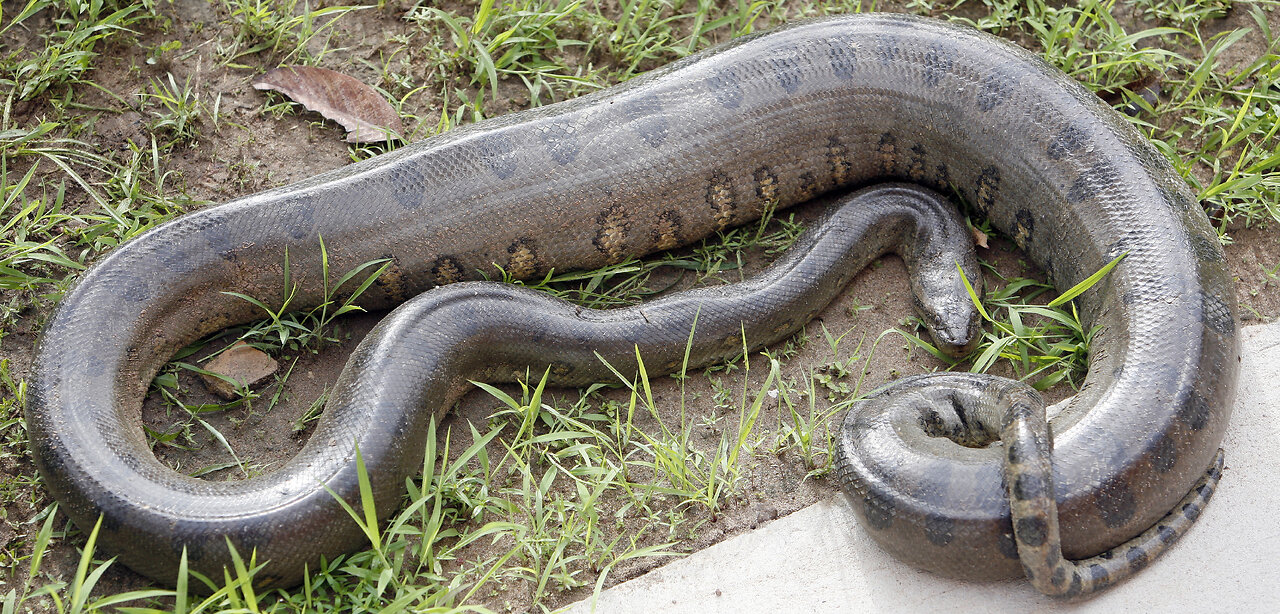Premium Only Content

Anaconda snake
Although the name applies to a group of snakes, it is often used to refer only to one species, in particular, the common or green anaconda (Eunectes murinus), which is the largest snake in the world by weight, and the second longest after the reticulated python.The South American names anacauchoa and anacaona were suggested in an account by Peter Martyr d'Anghiera, but the idea of a South American origin was questioned by Henry Walter Bates who, in his travels in South America, failed to find any similar name in use. The word anaconda is derived from the name of a snake from Ceylon (Sri Lanka) that John Ray described in Latin in his Synopsis Methodica Animalium (1693) as serpens indicus bubalinus anacandaia zeylonibus, ides bubalorum aliorumque jumentorum membra conterens.[2] Ray used a catalogue of snakes from the Leyden museum supplied by Dr. Tancred Robinson, but the description of its habit was based on Andreas Cleyer who in 1684 described a gigantic snake that crushed large animals by coiling around their bodies and crushing their bones.[3] Henry Yule in his Hobson-Jobson notes that the word became more popular due to a piece of fiction published in 1768 in the Scots Magazine by a certain R. Edwin. Edwin that described a 'tiger' being crushed to death by an anaconda, when there actually never were any tigers in Sri Lanka.[a] Yule and Frank Wall noted that the snake was in fact a python and suggested a Tamil origin anai-kondra meaning elephant killer.[5] A Sinhalese origin was also suggested by Donald Ferguson who pointed out that the word Henakandaya (hena lightning/large and kanda stem/trunk) was used in Sri Lanka for the small whip snake (Ahaetulla pulverulenta)[6] and somehow got misapplied to the python before myths were created.[7][8][9]
The name commonly used for the anaconda in Brazil is sucuri, sucuriju or sucuriuba.[10]The green anaconda (Eunectes murinus), also known as the giant anaconda, emerald anaconda, common anaconda, or common water boa, is a boa species found in South America and the Caribbean island of Trinidad. It is the largest, heaviest and the second longest (after the reticulated python) snake in the world.
-
 LIVE
LIVE
Russell Brand
2 hours ago“Trans Women NOT Legally Women,” Supreme Court Declares – SF567
4,109 watching -
 UPCOMING
UPCOMING
Sean Unpaved
55 minutes agoTodd McShay Breaks Down the 2025 NFL Draft
3 -
 LIVE
LIVE
Timcast
1 hour agoDemocrat Faces CRIMINAL CHARGE For FRAUD, Letitia James Targeting Of Trump BACKFIRES
47,103 watching -
 1:02:16
1:02:16
Steven Crowder
4 hours ago🔴 SCRAPYARD: JFK Assassination & Jewish Jokes That Should Never Make Air
219K171 -
 51:26
51:26
The Rubin Report
2 hours ago‘The View’ Co-Hosts Gasp as Whoopi Accidentally Echoes Trump Talking Points
27.5K26 -
 1:01:19
1:01:19
VINCE
4 hours ago'Big Tish James' Is About To FIND OUT! | Episode 23 (04/16/25)
236K172 -
 LIVE
LIVE
Benny Johnson
2 hours ago🚨 Trump DOJ Launches CRIMINAL PROSECUTION of NY Attorney General Letitia James for FRAUD | 'JAIL?'
8,556 watching -
 1:11:34
1:11:34
MYLUNCHBREAK CHANNEL PAGE
3 hours agoBeneath Chicago: Hidden Tunnels
25K8 -
 LIVE
LIVE
LFA TV
15 hours agoLFA TV - ALL DAY LIVE STREAM 4/16/25
3,866 watching -
 LIVE
LIVE
Side Scrollers Podcast
2 hours agoBlue Origin Launch WRECKED Online, PS6 Handheld, Home Alone Director Has TDS | Side Scrollers
382 watching